- News
- Reviews
- Bikes
- Accessories
- Accessories - misc
- Computer mounts
- Bags
- Bar ends
- Bike bags & cases
- Bottle cages
- Bottles
- Cameras
- Car racks
- Child seats
- Computers
- Glasses
- GPS units
- Helmets
- Lights - front
- Lights - rear
- Lights - sets
- Locks
- Mirrors
- Mudguards
- Racks
- Pumps & CO2 inflators
- Puncture kits
- Reflectives
- Smart watches
- Stands and racks
- Trailers
- Clothing
- Components
- Bar tape & grips
- Bottom brackets
- Brake & gear cables
- Brake & STI levers
- Brake pads & spares
- Brakes
- Cassettes & freewheels
- Chains
- Chainsets & chainrings
- Derailleurs - front
- Derailleurs - rear
- Forks
- Gear levers & shifters
- Groupsets
- Handlebars & extensions
- Headsets
- Hubs
- Inner tubes
- Pedals
- Quick releases & skewers
- Saddles
- Seatposts
- Stems
- Wheels
- Tyres
- Health, fitness and nutrition
- Tools and workshop
- Miscellaneous
- Cross country mountain bikes
- Tubeless valves
- Buyers Guides
- Features
- Forum
- Recommends
- Podcast
review
£3,149.00
VERDICT:
Fast and fun with brilliant handling and a very good price
Very well balanced handling
Can do far more than just racing
Good build for the money
One-piece bar/stem limits fit options
Weight:
7,910g
Contact:
At road.cc every product is thoroughly tested for as long as it takes to get a proper insight into how well it works. Our reviewers are experienced cyclists that we trust to be objective. While we strive to ensure that opinions expressed are backed up by facts, reviews are by their nature an informed opinion, not a definitive verdict. We don't intentionally try to break anything (except locks) but we do try to look for weak points in any design. The overall score is not just an average of the other scores: it reflects both a product's function and value – with value determined by how a product compares with items of similar spec, quality, and price.
What the road.cc scores meanGood scores are more common than bad, because fortunately good products are more common than bad.
- Exceptional
- Excellent
- Very Good
- Good
- Quite good
- Average
- Not so good
- Poor
- Bad
- Appalling
For 2021, Canyon's Inflite CF SL 8 uses the same frameset as the bike that we reviewed when it launched in 2019. The handling is still superb, balancing the ability to flick through technical corners with decent stability at speed. The top tube design doesn't do anything for me aesthetically or when shouldering the bike, but the way the rear end soaks up rough terrain suggests that it is doing something useful. A brilliant cyclo-cross bike for racing and so much more.
Canyon's 2021 Inflite range has no major changes over the 2019 version. There are a couple of small spec changes to go along with some new colours, but essentially the bikes of Alpecin Fenix's two world champions, Mathieu van der Poel and Ceylin del Carmen Alvarado, are the same.
The build that we have here is quite a bit different from the one that David Arthur tested in 2019. The new CF SL 8 features SRAM's Force CX1 groupset, my favourite SRAM offering. There is also the carbon Reynolds AR41 DB wheels, the ever-dependable Schwalbe X-One Allround TLE tyres and Canyon's H31 Ergocockpit. At £3,149, it's a lot of bike for the money and one that I've been having a lot of fun riding on everything apart from a racecourse.
The majority of my riding has consisted of what I'd deem 'adventure cyclo-cross'. That is to say, I've ridden just about everywhere on this bike, from road group rides through to single track descents where a mountain bike would have been far more appropriate. I've done some race training to mimic typical cyclo-cross terrain, but I've not had the chance to ride this bike in anger thanks to our friend COVID.
My lasting impression of this bike is how much more of a capable off-road bike it is than 'just' a dedicated cyclo-cross race bike. I've happily ridden road, gravel and mountain bike rides on this bike, with the Inflite only really struggling on properly rocky terrain.
I'm really sad to have missed out on racing on the Inflite but some race training on flat grassy surfaces with some corners marked out by cones gave me a good idea of how the bike would handle tighter race circuits. I've been riding a very traditional cyclo-cross bike for a few years and the difference here is definitely noticeable.
The Canyon is slacker with a 73.5-degree seat tube angle and a 72.25-degree head tube angle on this size small. It is also quite a bit longer, with a reach of 381mm and a top tube measuring 550mm. Canyon has done this on purpose to make the bike more stable at speed, and it shows. The Inflite is a calm bike when pointed down fast single track and this is confidence-inspiring to the point that I was running out of bike handling skills on several occasions. Still, I suppose it's good to push the boundaries from time to time.
Back on my preferred cyclo-cross terrain of the local sports pitches, the Inflite still handles slower, more traditional cyclo-cross corners and features well thanks mainly to the short stem offsetting the 1,006mm wheelbase. Coming from a bike with a longer stem, I did find that this front end flickiness took a little while to get used to, but once I settled into the bike's handling, the performance, particularly in sandy conditions where constant adjustments are needed, is really good. It's a setup change that I'll be taking forward to future bikes.
The top tube design wasn't to my taste when Canyon first launched the carbon Inflite, and although I'm now less bothered by it aesthetically, I still don't think it does much for shouldering comfort or ease compared to the likes of Giant's TCX or Ridley's X-Night straight top tube designs.
While you may shoulder the bike using the 'kink' when walking up stairs, the bike feels far more secure and balanced if you place your shoulder further along the top tube. This allows you to wrap your arm either under the down tube or around the head tube and grip the inside drop with your shouldering hand. In this position, running with the bike is easier and more comfortable, and if you want to get tactical you can use your bike to block other riders from passing you. All is fair in love and bike racing.
The top tube design does have another purpose which I do believe is working. The extra exposed seatpost adds to the calm feel of the bike and the resulting reduction in ground chatter reaching me led to a marginally less beaten up feeling at the end of hard rides.
Groupset
SRAM's Force CX1 groupset is perhaps old technology now, but it still works very well. A lot has been said about the groupset so I'll keep this bit brief and focused on my impressions of it.
I find the hood shape to be great for the rougher terrain of cyclo-cross, with the added height of the shifter providing a secure grip that is also very welcome in muddy conditions.
The shifting is incredibly fast and crisp, but you need to have it set up perfectly and keep on top of cable maintenance or mis-shifts will become common.
The brakes just work, and the pad spacing in the calliper allows any mud to clear easily, keeping the wheels turning.
Apart from that, the combination of a 40-tooth chainring and an 11-36 cassette provided plenty of range for road, CX and gravel riding.
There were times on some road group rides where I might have wished for a 42T chainring or a 10T sprocket, but for the majority of my time on the bike, the gearing was ideal.
Wheels
The Reynolds AR41 carbon tubeless wheels are a great pick in my opinion. The rim is very wide, with the 21mm internal width giving the 33mm tyres very good support that shows when you drop the pressures.
Away from tyre support, the wheels feel very fast when you hit the power out of the corners. This is imperative for me in a cyclo-cross bike as races feature countless small accelerations and so a bike that feels nippy really encourages you to keep making those efforts.
The wheels felt perfectly stiff enough when I pumped up the tyres for road rides, and they match their rapid acceleration with great rolling speed. The hubs gave me absolutely no issues and seem to be rolling smoothly even after they've seen a lot of sand, a very good bearing killer.
Tyres
I've used the Schwalbe X-One All-Round TLE tyres on a number of CX bikes and they're a great choice for a mix of surface conditions should you not have a truck full of wheels with different tyre options like the pros do.
The tread profile is great, with a pattern that grips effectively and clears reasonably well too. The knobs are taller towards the shoulders on the tyre and they're very soft, allowing them to deform.
The casing isn't the highest thread count out there, but the tubeless fit is very secure so you can run the 33mm tyres at low pressures without fear of burping air. These factors combine to give you a lot of grip in a range of conditions, and with the space in the frame, you can always go a bit wider if you're not subject to the UCI maximum 33mm tyre size for racing.
Finishing kit
At the front of the bike, Canyon has used its integrated H31 Ergocockpit carbon bar and stem. While this chunky design provides a stiff platform for big sprint efforts, I'd personally prefer a two-piece design, with a separate bar and stem providing a far greater range of adjustability.
Canyon says that each size comes with a bar width and stem length that has been chosen for maximum control, but we're all different, and being able to fine-tune your position is critical in a discipline that relies so heavily on balanced handling.
At the rear end of the bike, Canyon has included its catchily named SP0042 VCLS CF carbon seatpost. I mentioned earlier the smoothness of the Inflite and I believe that the seatpost, and the amount of it that is exposed here, is key to that feeling. Aside from a smooth ride, the post didn't slip under my less than perfect remounting, and the clamp held the saddle firmly in place too.
Talking of saddles, the Selle Italia SLS Boost FeC is a very comfortable choice for this type of bike, with generous padding, a relatively wide and flat nose and loads of space to move your weight around. I had a few rides of over four hours and I was very impressed with the saddle, although if this is going to be a dedicated race bike, you could save a bit of weight here.
Value
Canyon built its slice of the bike market based on its good value, and while this has possibly become a shrinking factor, what you're getting for your money here is still very good indeed.
As a recap, you've got a very good carbon frame, modern and wide tubeless carbon wheels, excellent tyres, a groupset that is perfect for the bike and a fancy integrated carbon bar/stem for £3,149.
Trek's 2021 Boone 6 Disc is cheaper at £3,100 but its wheels don't match the quality of the carbon ones on the Canyon. For the UK market, this is the only Boone that Trek is offering, and it has opted for a Shimano GRX RX810 1X drivetrain and Bontrager Paradigm Comp alloy wheels.
Ridley's X-Night SL at £3,189 steps down a groupset level to SRAM's Rival 1, though this is still a great groupset. You also bump down to alloy wheels, though Ridley has taken the step of hiding the cabling inside the head tube. How useful that really is in a discipline where bike maintenance is a regular requirement isn't that clear, but combined with the straight top tube design, it creates a very clean design that I much prefer.
> Buyer’s Guide: 12 of the best cyclo-cross bikes
If I was going for the Inflite, I'd be tempted by the cheaper CF SL 6 model that ditches the one-piece bar/stem and the carbon wheels. In normal times my CX riding consists mainly of racing so I'd be looking to put tubular wheels on, so wouldn't need the very nice carbon tubeless hoops. I'd also want the adjustability that a separate bar and stem brings. SRAM Force might be lighter than Rival, but I find that they perform similarly well, especially when race conditions are properly muddy. Me being me, the money saved on the £2,049 CF SL 6 would be headed straight for some tubular wheels and maybe a lighter bar and stem.
Conclusion
All in, I think the Canyon Inflite CF SL 8 is a brilliant package for keen racers who also want to explore cyclo-cross riding beyond the confines of the race tape. The bike is very capable and the geometry works very well to balance calm handling at speed with the sharpness needed for your classic cyclo-cross course features. While I'd pick a different build for my required fit adjustability, the CF SL 8 offers everything that most people would look for in a higher-end cyclo-cross racer.
Verdict
Fast and fun with brilliant handling and a very good price
road.cc test report
Make and model: Canyon Inflite CF SL 8
Size tested: Small
About the bike
List the components used to build up the bike.
Frame
Canyon Inflite CF SL Disc
Material: Carbon
Axle Dimension: 12 x 142 mm
Brake Mount: Flat Mount
Weight: 1040 g (M)
Fork
Canyon FK0045 CF Disc
Material: Carbon
Steerer: 1 1/4"
Axle Dimension: 12 x 100 mm
Brake Mount: Flat Mount
Rear Derailleur
SRAM Force 1 GS
Chainguard
Canyon Chain Catcher EP0703
Cassette
SRAM PG-1130 11-36 11s
Crank
SRAM Force CX1 40T
Bottom bracket
SRAM Pressfit GXP
Chain
SRAM PC 1110 11s
Shift-/ Brake Lever
SRAM Force 1 HRD 1s
Shift-/ Brake Lever
SRAM Force 1 HRD 11s
Brake Rotor
SRAM Centerline Rounded Edges
Disc Mount: 6-Hole
Brake Rotor
SRAM Centerline Rounded Edges
Disc Mount: 6-Hole
Wheel
Reynolds AR41 DB
Rim Material: Carbon
Rim Height: 41 mm
Inner Width: 21 mm
Weight: 1500 g (set)
Wheel
Reynolds AR41 DB SH11
Rim Material: Carbon
Rim Height: 41 mm
Inner Width: 21 mm
Weight: 1525 g (set)
Tyre
Schwalbe X-One Allround TLE
Thru Axle
Canyon Thru Axle
1 x Canyon Road Thru-Axle Front
Thru Axle
Canyon Thru Axle
1 x Canyon Road Thru-Axle Rear
Cockpit
Canyon H31 Ergocockpit CF
Material: Carbon
Shape: Ergo
Reach: 70 mm
Drop: 128 mm
Handlebar Tape
Canyon Ergospeed Gel
Bar tape with EVA foam and elastomer gel mix for optimal comfort
Handlebar Tape
Canyon bar-end plug
Saddle
Selle Italia SLS Boost FeC
Seatpost
Canyon SP0042 VCLS CF
Material: Carbon
Setback: 8 mm
Technology: VCLS
Pedals
None included
Manuals and Accessories
Canyon tool case
Manuals and Accessories
BAG REY Acc Assault LE 21C C DB
Manuals and Accessories
CAYN Hinweis Cockpitklemmung H31
Manuals and Accessories
Canyon starter box
All you need to get riding: Quick Start Guide, manual, torque wrench incl. bit set, bearing adjustment tool, grease, carbon assembly paste
Derailleur hanger
Hanger GP0211-01
Tell us what the bike is for and who it's aimed at. What do the manufacturers say about it? How does that compare to your own feelings about the bike?
A cyclo-cross race bike.
Where does this model sit in the range? Tell us briefly about the cheaper options and the more expensive options
We're in the middle of things with the SL 8. Carbon options start at £2,049 and top out at £4,199.
Frame and fork
Overall rating for frame and fork
9/10
Tell us about the build quality and finish of the frame and fork?
Everything seems good to the eye.
Tell us about the materials used in the frame and fork?
'Carbon' is about as much detail as you'll get out of Canyon on this.
Tell us about the geometry of the frame and fork?
It's the same as the first carbon Inflite. It's long in the top tube and slack, with a long wheelbase.
How was the bike in terms of height and reach? How did it compare to other bikes of the same stated size?
I found this small size to be absolutely perfect. Canyon has opted for a slightly taller design than the traditional 'cross geometries that I'm used to, but with the long reach created by the extra length in the top tube, you can still get a long and low aero race position if you want to.
Riding the bike
Was the bike comfortable to ride? Tell us how you felt about the ride quality.
Very comfortable, with some of that coming from the seatpost but most coming from the low tyre pressure.
Did the bike feel stiff in the right places? Did any part of the bike feel too stiff or too flexible?
It's stiff when you're sprinting out of corners and up short climbs, which is perfect for this bike.
How did the bike transfer power? Did it feel efficient?
It felt efficient to me, but any power sacrificed will mostly be lost through the low tyre pressures.
Was there any toe-clip overlap with the front wheel? If so was it a problem?
I didn't find any.
How would you describe the steering? Was it lively neutral or unresponsive? The short stem means that it is very lively.
Tell us some more about the handling. How did the bike feel overall? Did it do particular things well or badly?
It was different from my old setup, but the long frame with the short stem gives you great handling pretty much everywhere.
Which components had the most effect (good or bad) on the bike's comfort? would you recommend any changes?
Tyre pressure is always going to be king, especially in cyclo-cross.
Which components had the most effect (good or bad) on the bike's stiffness? would you recommend any changes?
The one-piece bar/stem is great if you want a stiff front end.
Which components had the most effect (good or bad) on the bike's efficiency? would you recommend any changes?
The wheels hold their speed very nicely and spin up quickly out of corners.
Rate the bike for efficiency of power transfer:
8/10
Rate the bike for acceleration:
9/10
Rate the bike for sprinting:
8/10
Rate the bike for high speed stability:
8/10
Rate the bike for cruising speed stability:
9/10
Rate the bike for low speed stability:
10/10
Rate the bike for flat cornering:
8/10
Rate the bike for cornering on descents:
8/10
Rate the bike for climbing:
7/10
The drivetrain
Rate the drivetrain for performance:
8/10
Rate the drivetrain for durability:
7/10
Rate the drivetrain for weight:
8/10
Rate the drivetrain for value:
6/10
Tell us some more about the drivetrain. Anything you particularly did or didn't like? Any components which didn't work well together?
SRAM's Force groupset is brilliant as long as you keep it dialled.
Wheels and tyres
Rate the wheels for performance:
8/10
Rate the wheels for durability:
8/10
Rate the wheels for weight:
7/10
Rate the wheels for comfort:
8/10
Rate the wheels for value:
6/10
Tell us some more about the wheels.Did they work well in the conditions you encountered? Would you change the wheels? If so what for?
A great depth for cyclo-cross as they combine the easy acceleration of a shallow rim with the rolling speed of a deeper wheel.
Rate the tyres for performance:
8/10
Rate the tyres for durability:
7/10
Rate the tyres for weight:
6/10
Rate the tyres for comfort:
8/10
Rate the tyres for value:
8/10
Tell us some more about the tyres. Did they work well in the conditions you encountered? Would you change the tyres? If so what for?
A good tyre for a range of conditions.
Controls
Rate the controls for performance:
8/10
Rate the controls for durability:
7/10
Rate the controls for weight:
7/10
Rate the controls for comfort:
7/10
Rate the controls for value:
7/10
Tell us some more about the controls. Any particularly good or bad components? How would the controls work for larger or smaller riders?
The hood shape is great for cyclo-cross as the large profile give easy grip.
Your summary
Did you enjoy riding the bike? Yes
Would you consider buying the bike? Yes, but I'd have the SL 6.
Would you recommend the bike to a friend? Yes
How does the price compare to that of similar bikes in the market, including ones recently tested on road.cc?
Trek's Boone 6 Disc is cheaper but doesn't have the same quality wheels; Ridley's X-Night SL is £3,189 and steps down a groupset level, while Giant's two TCX models sit either side of the SL 8.
Rate the bike overall for performance:
9/10
Rate the bike overall for value:
7/10
Use this box to explain your overall score
Brilliant handling, fast and capable beyond racing. The Inflite CF SL 8 also boasts a very good components package for the cash.
About the tester
Age: 24
I usually ride: Cannondale Supersix Di2 My best bike is:
I've been riding for: 5-10 years I ride: Most days I would class myself as: Expert
I regularly do the following types of riding: road racing, time trialling, cyclo cross, commuting, club rides, general fitness riding, I specialise in the Cafe Ride!
Latest Comments
- eburtthebike 54 min 10 sec ago
I went to the shellfish disco, showing all my moves, and I pulled a muscle.
- w61 54 min 54 sec ago
Agreed. Filmores work great and also look less clunky than alternatives.
- David9694 1 hour 54 min ago
Six-year-old's lucky escape as car flips in three-vehicle M6 crash...
- Simon E 2 hours 41 min ago
I appreciate the thought but it would be far better if they both (and others) were still alive to inspire us. Just think how many more lives they...
- NR23Derek 2 hours 10 min ago
Why are the shared use paths so narrow? Norfolk County Council says "the land wasn't available". In fact, what they mean is they built up to the...
- belugabob 3 hours 19 min ago
I would question whether 96% of drivers have heard of (or understand) the 2022 updates to the highway code, never mind conform to them.
- Jogle 4 hours 10 min ago
I think that the could be distilled to "I don't like cycling and so neither should you. And I don't like buses. Now stop wasting my money on...
- David9694 4 hours 48 min ago
was planning on getting some WD-40 / GT 85 rivalry going, looked it up and now mind blown! 🤯
- snooks 5 hours 23 min ago
Holds it in place better no doubt. It's not complicated.





































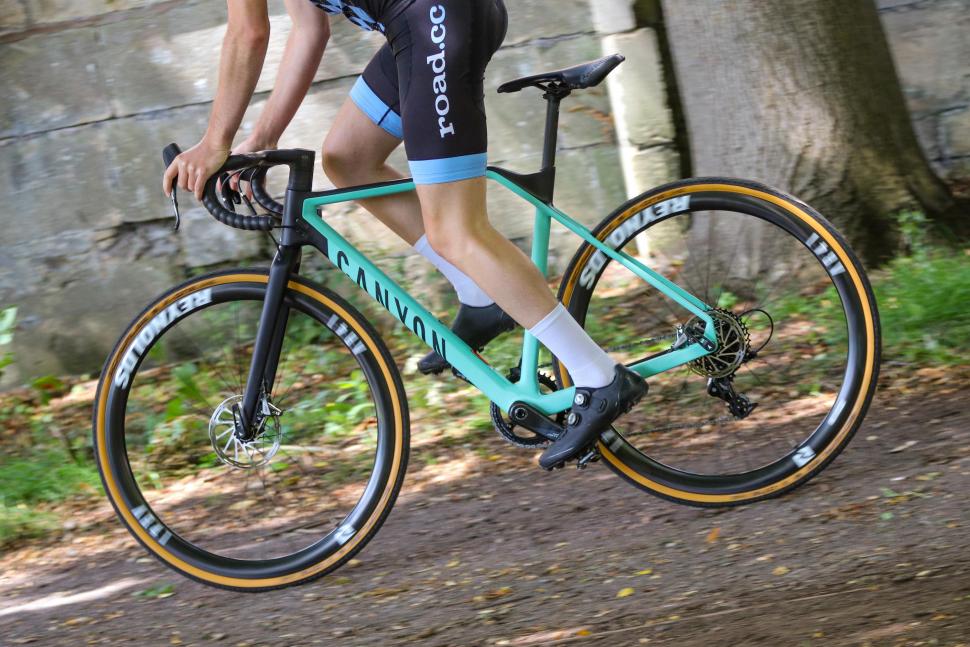

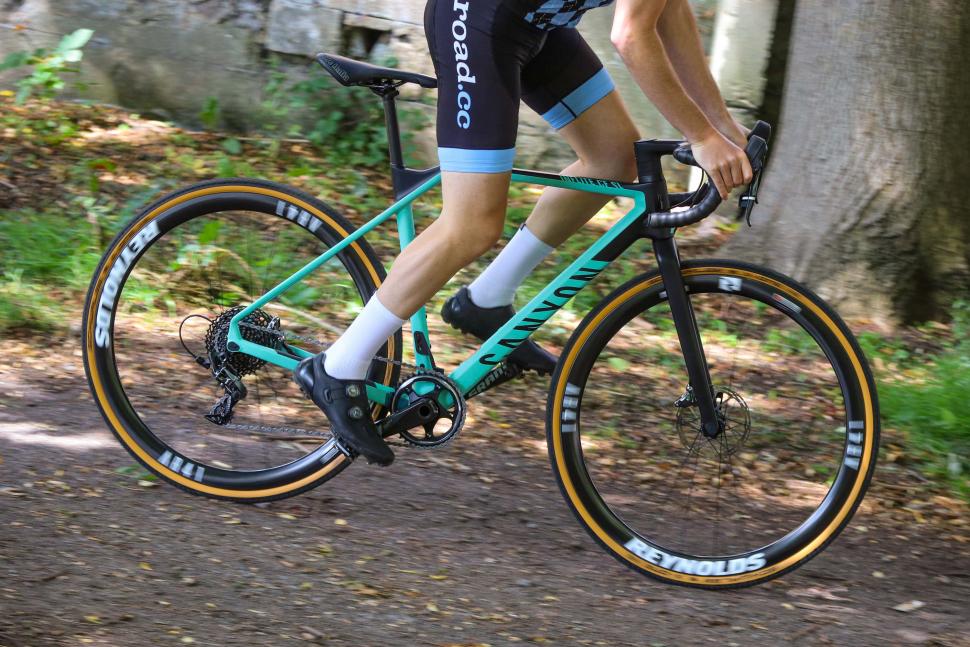
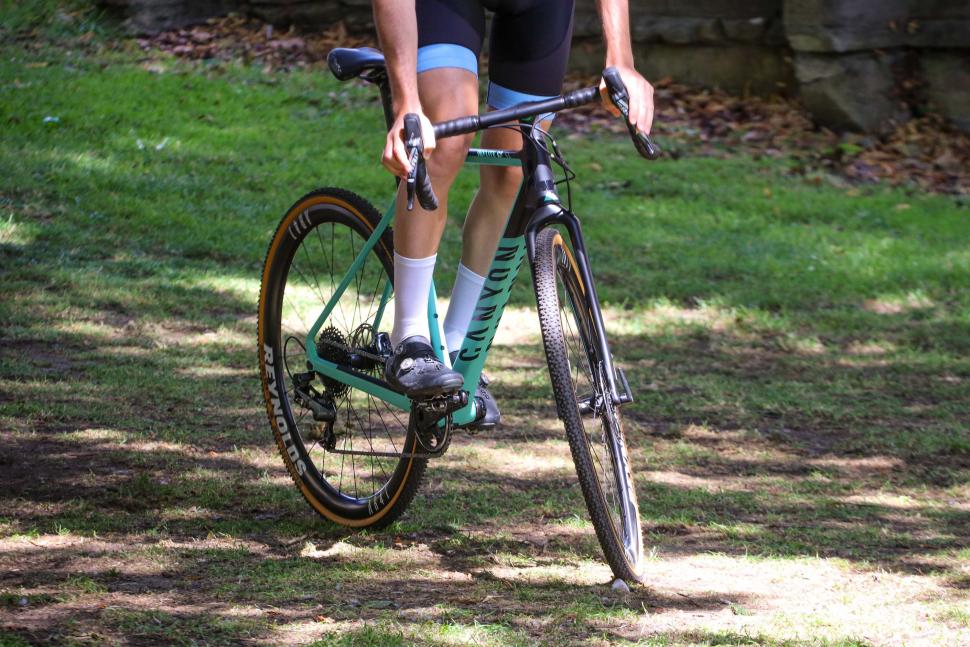

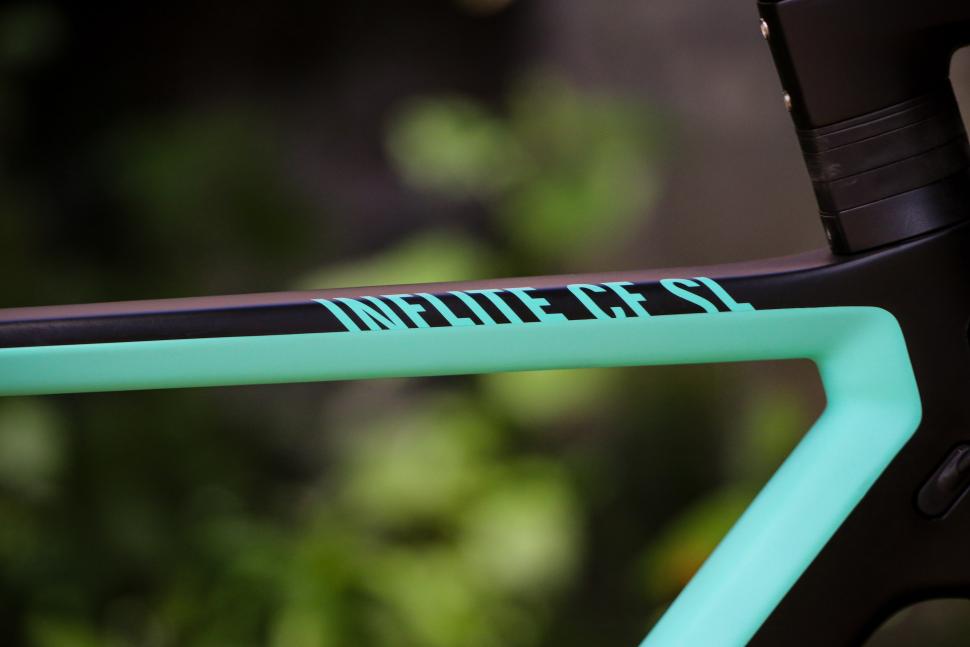
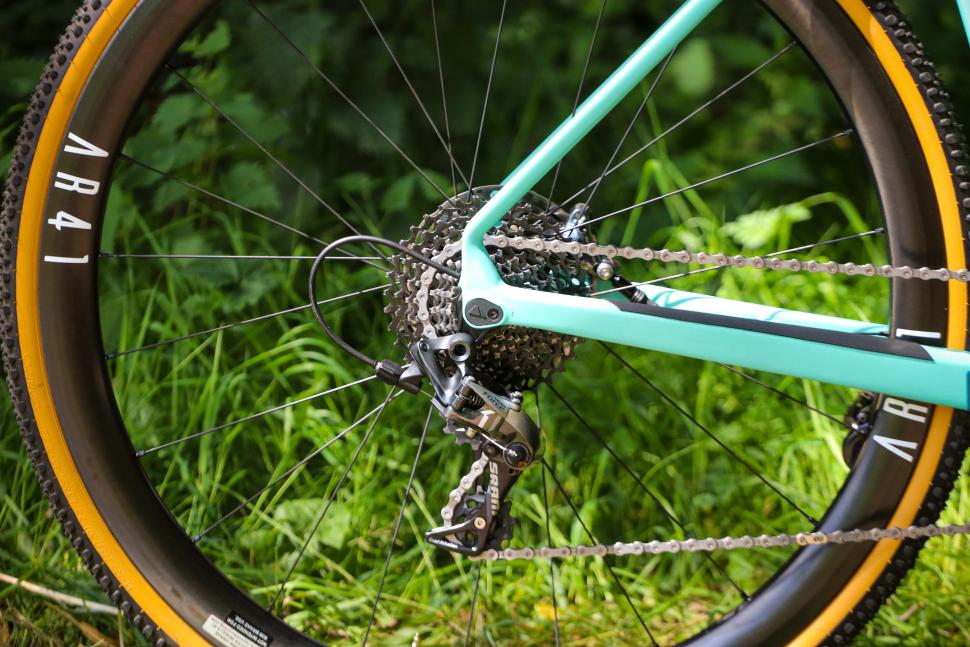

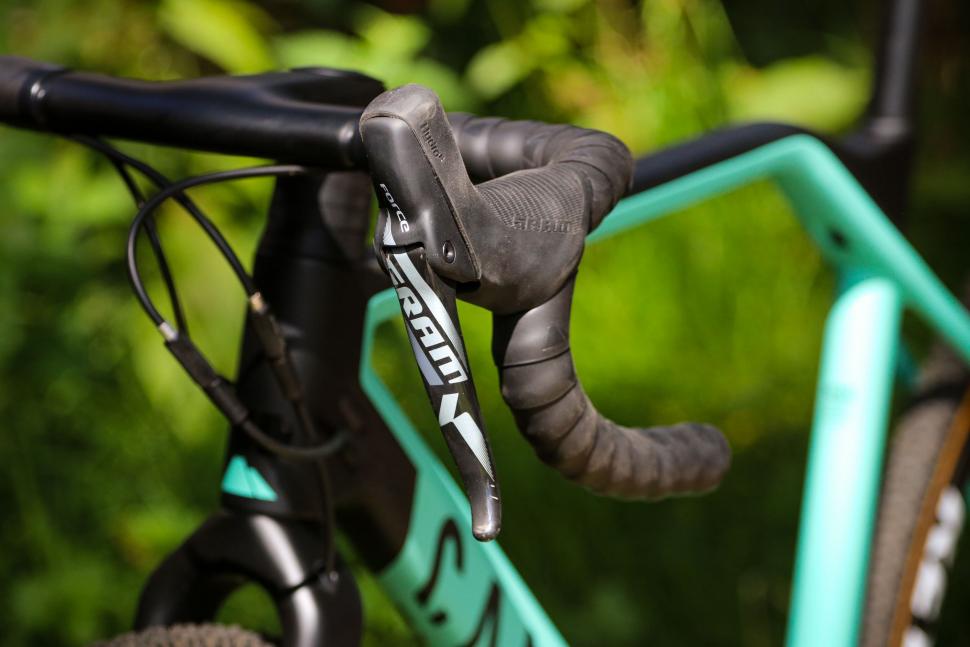








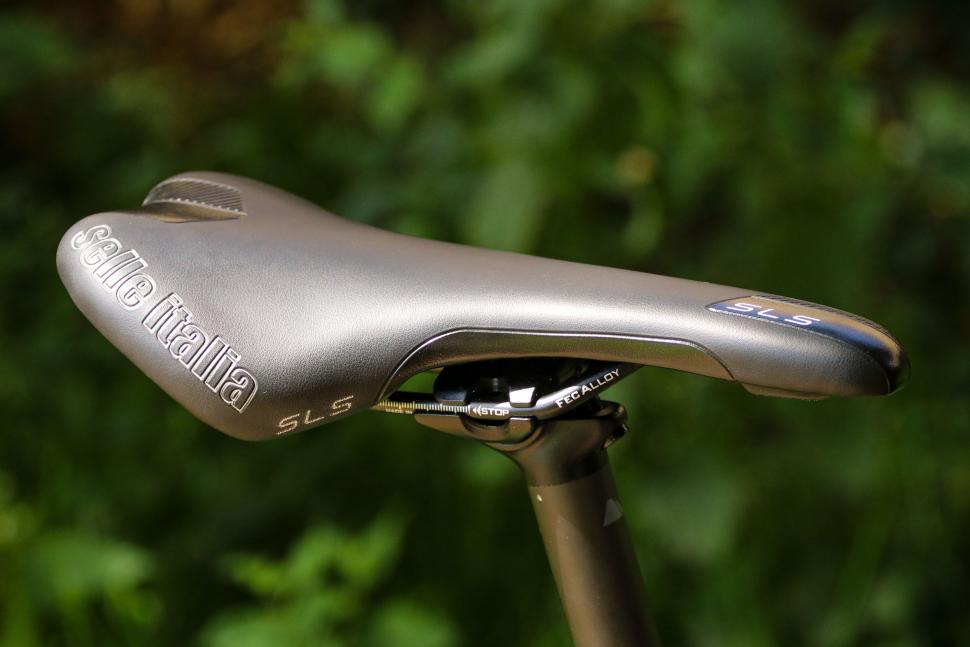
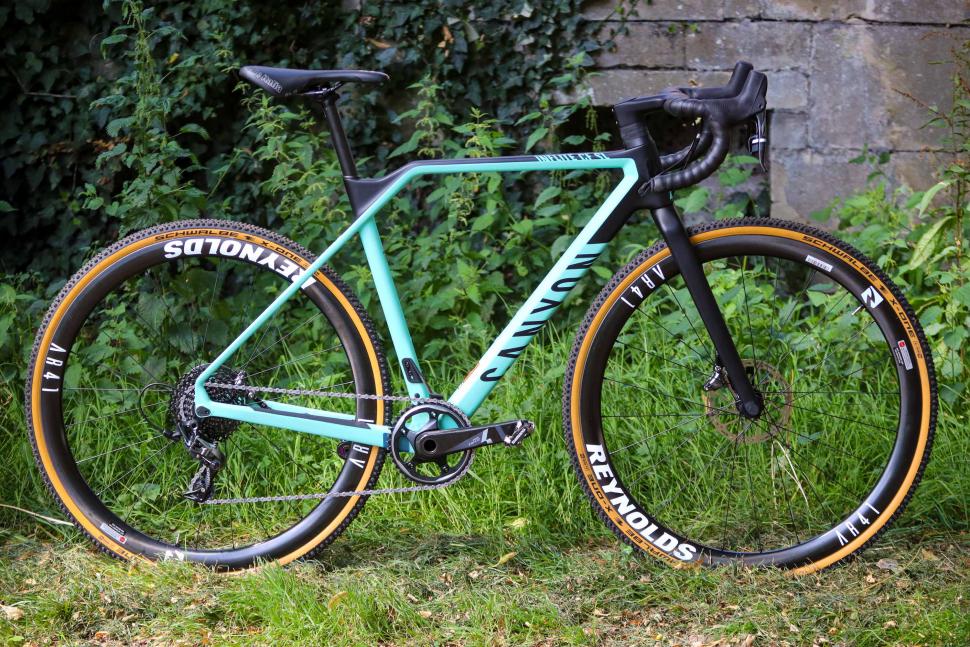
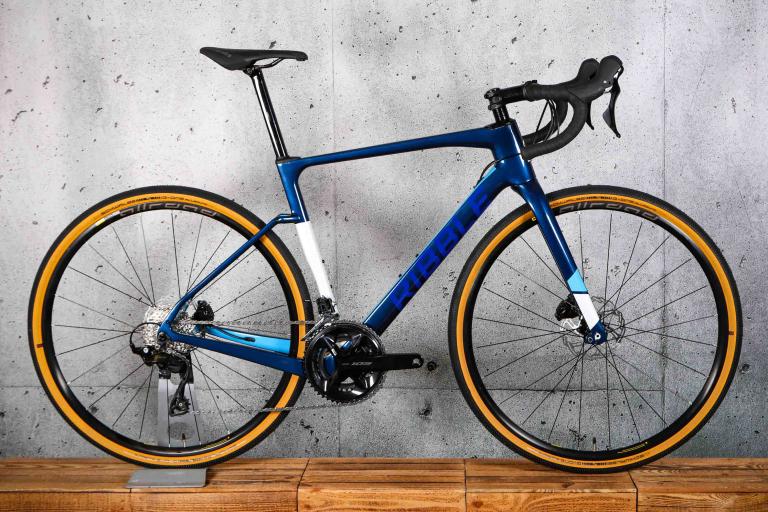
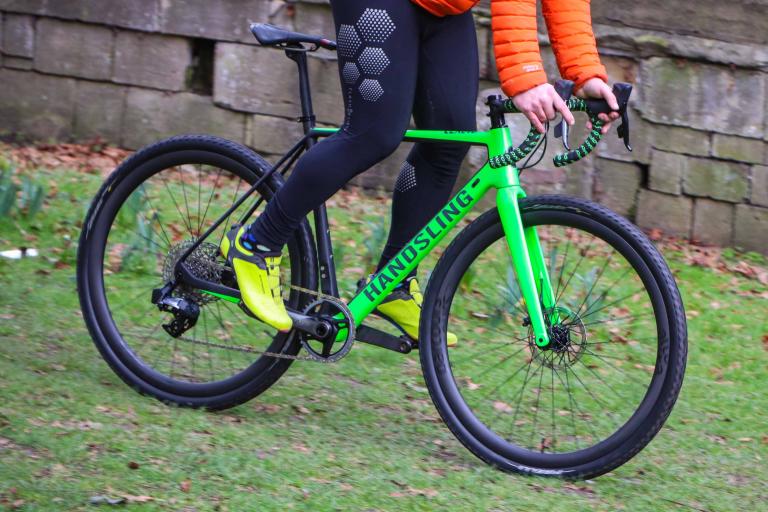

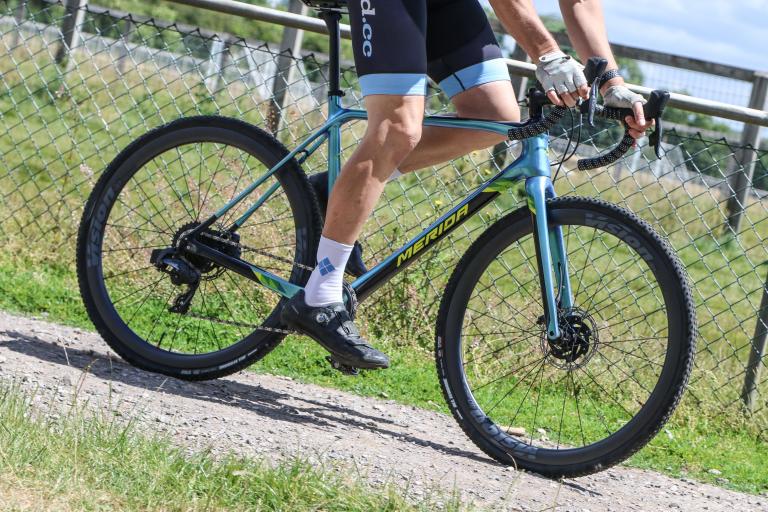
Add new comment
1 comments
I have this bike. It's flipping great. Only thing I'd request from Canyon is slightly better tyre clearance. You can get away with 37mm tyres in the dry summer, but realistically 35 is the best you can do all year round. Which is a shame when this could be a really fun and fast gravel bike in addition to it's CX duties.